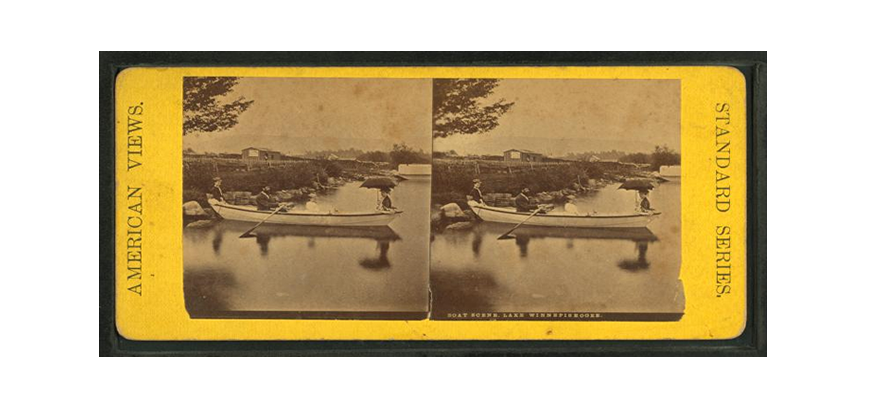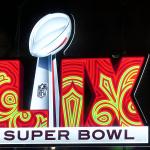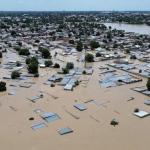Short Fiction: The Schizophrenic Camera of Professor McGraw (Part I)
In the first part of this haunting piece by Tofunmi Omowumi, we are transported back in time to a strange lake captured by a professor's camera. If you're a writer and wish to be featured on the ZODML blog, send your pitches to editorial[at]zodml[dot]org. We recall the conflagration of the University Staff Quarters in London in 1920. The renowned photojournalist, artist, and academician Professor Jefferson C. McGraw was confirmed dead in the fire outbreak on May 6. The fatal incident also claimed the lives of several notable scholars, including Dr. Marshall Kinston, a psychiatrist and close friend of Professor McGraw. It has been argued by some that the location of McGraw's most celebrated photo series "House of Demons" was documented somewhere in the professor's later works which vanished in the fire. Fifty years later, a group of young researchers led by the archaeologist Fred N. Monks discover parts of what are considered to be the memoirs of Professor McGraw.
...The red sun dropped like a grand chandelier before me as I headed west. It seemed as though the sun was preparing to bathe on the other side of the river. I finally had a clear path before me after the long walk among the tall grasses: from where I was to the river was hard red clay. The peach-coloured river made love to the wind as the water went up and down in a sensual oscillation. The entire outlook was soft and soothing. I took in a long drag of fresh air and felt a rush jolt my every fibre. Impulsively, I imagined the grandiose theatre. For me, a once in a lifetime shot was set by God himself. Hurriedly, I took my bag off my shoulder and quickly forgot the relief of being unburdened. I unzipped it and fumbled for my camera. I handed the bag over to Sally, the young boy who I had paid to lead me here. I crouched behind a small rock placing an elbow over it, adjusted my lens, and found the right angle. The shot was near perfection. I will never forget that picture – it is the first photograph in my collection at La Gallerie in Paris. I felt a stubborn discomfort: the tall grasses made my body itch, leaving sticky seeds on my boots, legs, and at the edges of my shorts. I was a little reluctant at first to scratch my skin with my cherished fingers, but the itch became more unbearable as we drew nearer to the river. I took a final glance at my well-treated fingers before I ran them over my skin. My body reddened as I eased myself. I saw a curtailed smile etched on Sally's cheeks. The boy surprised me; he was at ease even though he had more seeds on him. I looked away from him and realised we were right in front of the river. Sally quickly placed my bag in the canoe. He reached for the rope which steadied the boat and loosened the knot which firmly fastened it to a stump. He signalled me to sit in the canoe as he clutched the paddle. He propelled us through the stillness; the sweet love I first saw had turned into an insipid, passionless sport as the wind seemed to have had enough of the water. I lifted my head after a brief slumber and I beheld the mist floating on the water. The water had become still and the waves had become smaller. Nothing about the river was inspiring and so I began to slumber once more. The white clouds that accompanied harmattan had fallen over the river. The air became colder and I could not see the water that our canoe passed through. As we approached depths far from land it grew even colder. I felt goosebumps overwhelm me in the frigidity of the creeping night. It was too still. I shrugged and took my camera. I flashed at the mist and the birds behind it took flight; I captured them as they twittered away. I replaced my camera and sunk my hands in the water to splash off the persistent sleep. But as I pulled them from the water, my hands dripped a loose red. I screamed out. Sally gave me an expressionless gaze; he neither flinched nor squinted. All the while he paddled forward without a sound. Fear led my hands to the camera again and I leaned back to capture the zombie that paddled the canoe. At this point, I could hear the fast rhythm of my heartbeat. I coughed and heard the hoarseness in my throat echo back at me. I heard a long "uuuuuuuuuuuuuuuuh" every now and then, and an unseen voice laugh in the hysterical pitch of a classical singer. I saw men-like trees – or tree-like men – and I snapped with my camera before deciphering which they were. This time, I kept my camera around my neck. We halted, hitting the root of a tree. I looked behind me and the darkness was thick. The paddle fell hard against the canoe – I turned and saw that Sally was gone. Then the strongest stench I have perceived in all my life hit me. In the uncertainty of what smelt so awfully strong, I flashed my camera once again into the thick darkness. That picture is my most celebrated and the text below it at La Gallerie reads: "Cold bodies of many grey souls". The only question my pictures have raised from their first showing: "Where the hell is this?" I recall Dr. HD Marlow peering at the pictures one after the other with a piercing look. He felt the frames of the photos, as if to discover their essence. Suddenly, a familiar look crept into his gaze: I knew he had struck on something and so I braced myself for an audacious question. I taught him as an undergraduate – he has always been a bright lad. "Your scholarly eminence, sir, I consider these pictures tasteful and novel. Their themes are somewhat strange to our kind. The culture it represents is certainly not human. The holocaust is real, too real to be human. The..." "Mr. Marlow –" Marlow was interrupted by Johnson Clay, a Scottish critic. A quizzical gaze fell on him from all in the room. Marlow adjusted his glasses. "Apologies – Dr. Marlow. the photos appear to have been shot in a different culture - one we are not used to. However, I believe that to make judgements about the culture captured here is quite presumptuous. Of course we all can identify with the beautiful twilight but cannot seem to umderstand how it fades into a horrid nightfall. I believe knowing the details of where these photos were shot will instruct us better." Marlow felt his beard and then turned to face Clay. "Mr. Clay." Marlow's face brightened. "Your argument takes our eyes off the imposing and intriguing reality in these shots. The most notable fact is the uniqueness of this place in its gory outlook. However, I must disagree to agree with you because of a truth – knowing the location will be instructive." I know well Marlow’s egoistic nature and have always pitied his victims. He is a cocky type. His language is flamboyant and he sounds overly formal at every occasion. I am certain his happiest day was the day he bagged that doctorate. He changed the plaque on his door a day before: "HD Marlow" became "Dr. HD Marlow". He ensured he visited all his professors with at least one bottle of champagne. My bottles were particularly exquisite. On the bottles, the address was – in unmistakable uppercase – "From DR. HD MARLOW". The boy has some guts. I did not like the banter and wanted to save Johnson Clay face because I respect him as a critic. Unfortunately, he had challenged the untouchable ego of Dr. HD Marlow. "Your views are insightful and interesting. I think the opinion that expressed the need for openness in judging the photos is welcome. Well, no one has asked me any questions so far." All eyes fell on me in disbelief. "However, I believe everyone here wants to know where these photos were shot." I took a long look at the papers in front of me and raised my head to answer. "The answer beats me," I said, and right away, I left the lectern and made for the exit, ignoring the rising murmuring and confused chattering. There, my close friend, Dr. Marshall Kinston, was waiting to receive me. He quickly opened the car door for me, rushed to the passenger's seat, and off we zoomed. I turned back to see a crowd led by HD Marlow, signalling the car to stop. I felt that familiar haze overwhelm me and was glad that Dr. Kinston was with me. Browse more short stories on the ZODML blog. Image via NYPL Digital Gallery





